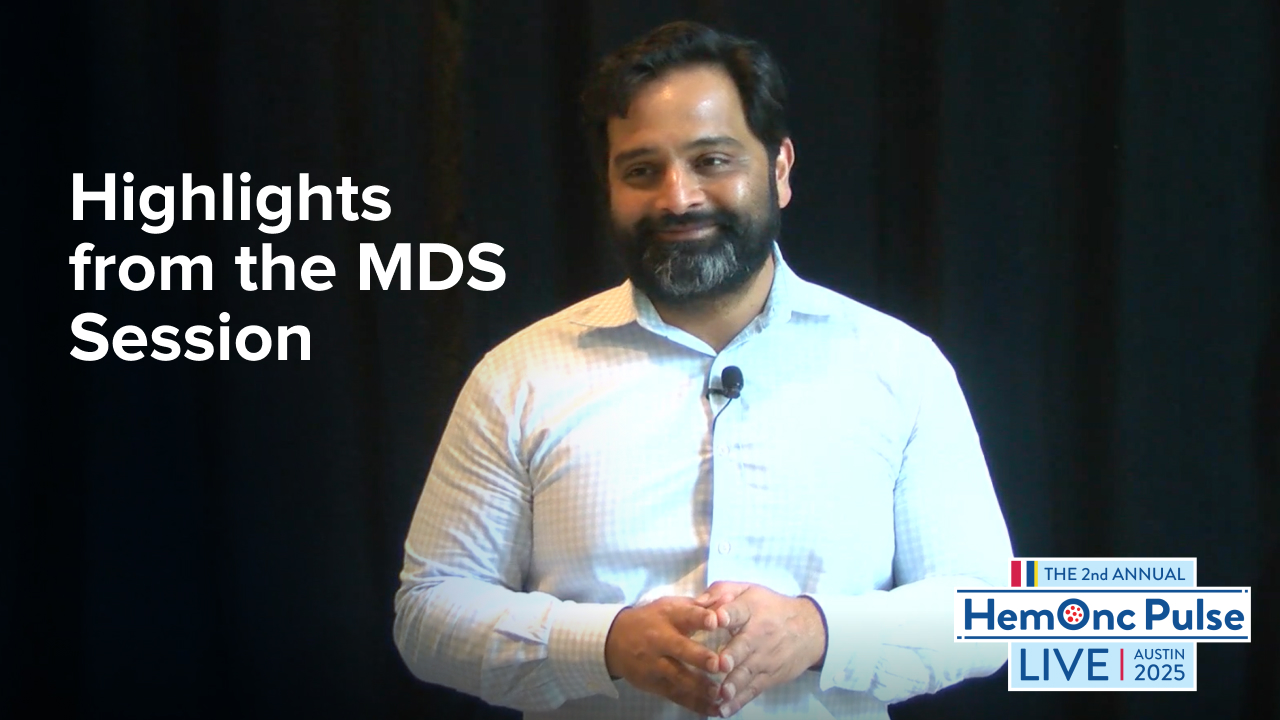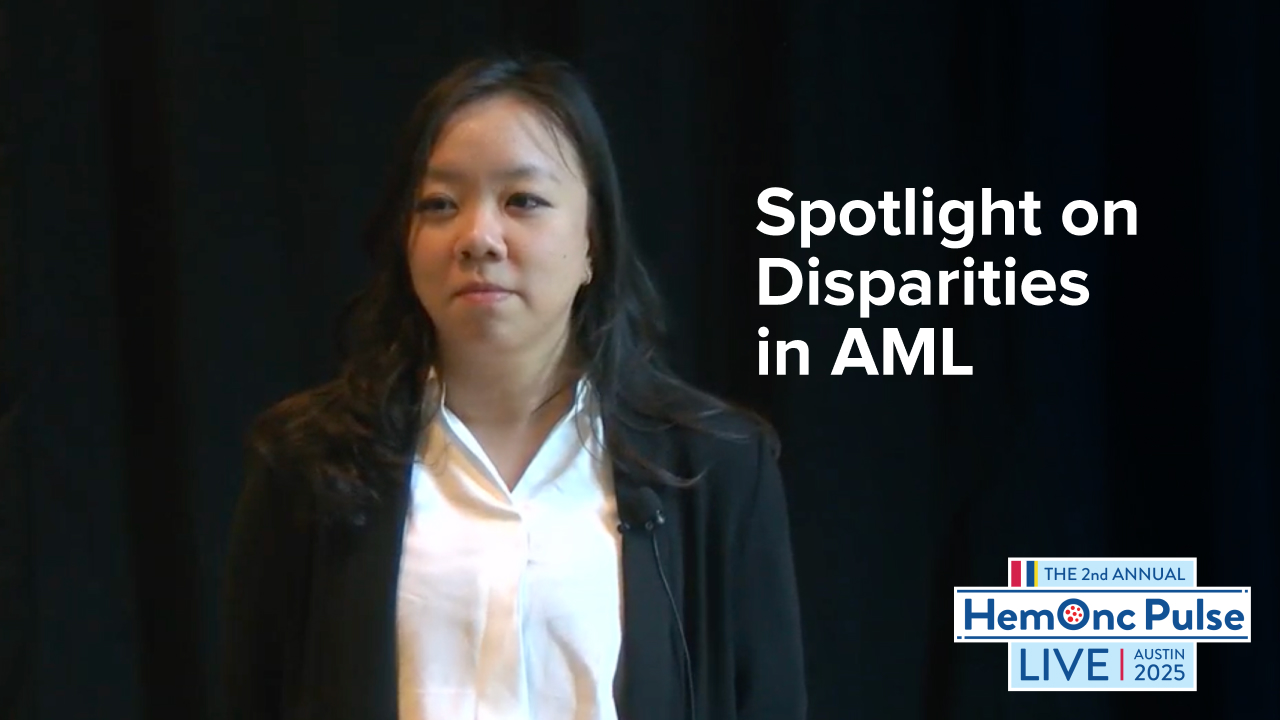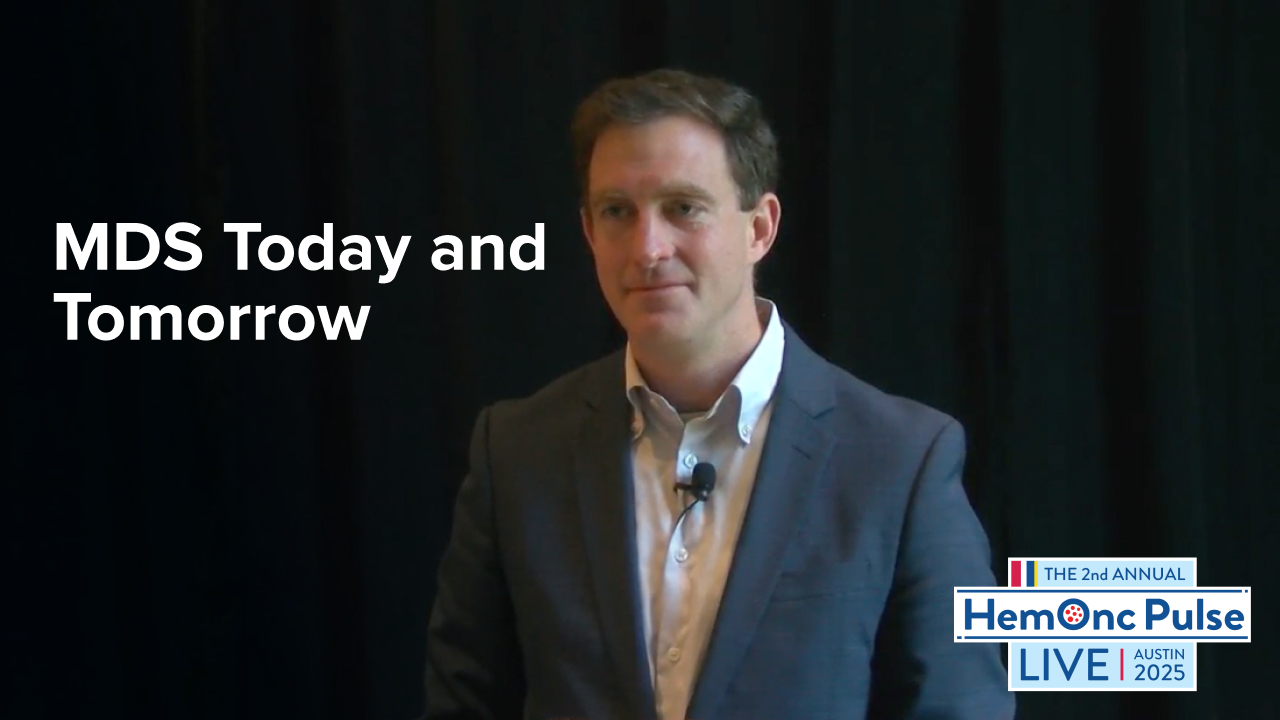Dr. Chari Discusses How He Manages Side Effects Related to Talquetamab
By Thomas Martin, MD, Ajai Chari, MD, Ajay Nooka, MD, FACP, Angela Dispenzieri, MD - Last Updated: October 12, 2023A roundtable discussion, moderated by Thomas Martin, MD, Blood Cancers Today Associate Editor, of the University of California, San Francisco, focused on bispecific therapeutics for the treatment of multiple myeloma. Dr. Martin was joined by Ajay Nooka, MD, MPH, FACP; Ajai Chari, MD; and Angela Dispenzieri, MD.
In the next segment of the roundtable series, Dr. Martin asks Dr. Chari to provide insights on adverse event management with talquetamab, since he has “treated a far majority of the patients” with this agent.
Watch the next segment in this series.
—
Dr. Martin: I want to address two things with talquetamab, Ajai, and you’ve treated a far majority of the patients with talquetamab, which is awesome. Any difference in this CRS [cytokine release syndrome] management for you for talquetamab? Then what about the oral and the skin toxicity?
Dr. Chari: I would say the CRS/ICANS [immune effector cell-associated neurotoxicity syndrome] not really different. Step up is the same. I think the one thing we should distinguish it from is the infection, right? If you look at the BCMA, you see a fair number of non-progression deaths primarily due to infections, often due to COVID-19. But talquetamab was enrolled in the same time period and has had no COVID-19-related deaths. We’ve actually shown that talquetamab does not aggregate COVID-19 vaccine responses. You have less cytopenias, less neutropenia, less infections, but instead you get these other, what we think are on-target off-tumor side effects. GPRC is over expressed in heavily keratinized tissue. We tend to see rashes, which tend to occur early; quite manageable with topical emollients and steroids. Rarely if it’s a grade 3 rash, which is very uncommon, you can use a short course of oral steroids.
There’s also nail fragility and alterations, which again, because of heavily keratinized tissue, that we haven’t found a magic target, a magic bullet for that. We see palmoplantar desquamation, again heavily keratinized, which responds to topical steroids. But I guess probably the most challenging is the oral. We don’t quite understand the pathophysiology. GPRC is expressed in some salivary gland tissue, but not necessarily GPRC5D in the areas of taste that we’re looking at. But I think encouraging patients to be hydrated, oral, sialogogues. Then the only thing I’ve found is the dose intensity. The good news is for all these bispecifics, the median time to response is one month. Most of these patients are responding and you then have the luxury of skipping a dose or holding it and restarting at a lower dose. That has been the mainstay. I would say at Mount Sinai we had probably altogether monotherapy and combination [therapy] about 100 patients on talquetamab and only one patient came off for non-progressive disease. I think if you educate the team and the patient and then dose adjust, those people usually can stay on and get the maximum benefit.






 © 2025 Mashup Media, LLC, a Formedics Property. All Rights Reserved.
© 2025 Mashup Media, LLC, a Formedics Property. All Rights Reserved.